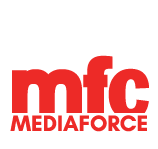
Netflix announces 46 beneficiaries of its Creative Equity Scholarship Fund in East Africa
October 11, 2022
Brand Launch: 3 tips to a Successful Brand Launch for all Businesses
November 24, 2022How to best tell the story of your work or experiences
Firstly, What is a documentary film? According to Brilliantio, a documentary film is a video that informs or educates its audience about a specific topic or issue. Sometimes, through your work, or your own lived experiences, you encounter stories or work that need to be told beyond the eyes and ears of the few that are directly impacted. If you’re here, you are probably looking for the best team of videographers, producers and editors to produce your documentary video. In this article, we will be guiding you through how to best make a documentary film.
First of all, a good documentary is more than just a few heads behind the camera, and quick cuts on editing software to create something you can upload onto YouTube and share with the world. There are so many things to consider when setting yourself up for an award-winning documentary but here are a few for a start:
- Script
- Shots list
- locations and time
- Crew & Equipment
- Production
At MediaForce Communications, we have a team of storytellers with experience spanning over a decade ready to help you tell your story through a compelling documentary.
Script: Planning your story
Across all communities and nations in Africa, we are all born from a long line of storytellers! On any given night somewhere under the African night sky, there’s a group of people seated around a fire, or a meal listening to tales of a time long past.
Whether your documentary will be of real events happening in the present day, or a re-enactment of a story from the past, it is important to intentionally plan out every aspect of your story before the cameras start rolling. This is done by script writing A script is a written document that is used in film production but helps visualize the scenes of the production. Moreover, a script ensures that you do not miss out on any of the important bits. Believe it or not, as much as you might think you understand your work, or your story, without a script, you may end up unintentionally misstating certain aspects. Some examples/types of scripts include:
- Poetic
- Performative
- Observational
- Expository
- Reflexive
- Participatory
The Shots list: Getting the perfect angles and scenes in your story
Every story is only as good as how it is told. Sometimes, a good camera angle just comes naturally given years of experience, trial and error. However, the perfect shots are best achieved with prior planning and choreography. Depending on your particular story, there are key shots, scenes or images that you should expect to capture. Having these written down helps you not leave any out.
Moreover, remember to include the ‘in-betweeners’, the fillers, or in technical terms the B-rolls. These are the scenes that help tell your story, or give a wider context, but may not be necessarily part of that exact moment in your story.
Getting the right locations for your story
Depending on whether your story is a process demonstration, a work/project report, or a story re-enactment; the locations of your story are a key consideration. The positioning of the different elements in the scene where your story is being told helps tell where and where your story is happening. This helps your viewers immerse and get in deeper with the story. Locations are key in giving context to your stories and connecting your documentary to real times and places in the real world.
Getting the right crew and equipment
An old man once told me, that a pen is only as good as a writer. You can spend millions on the most valuable golden pen, only to not know how to write as well. Anyone can pick up a camera and tell a story. In fact, the uptake and penetration of mobile phones have turned literally anyone with a smartphone into a reporter. You will find mobile-generated photos and videos even in mainstream news publications. However, the best stories demand a good mix of equipment and production crew.
At MediaForce Communications, we don’t just send out photographers and videographers. Our teams are storytellers above all else. Every shot taken is thoughtfully made having in mind how it will contribute to the final documentary story. We are also always keen to bring with us equipment that is of the best quality, but also compact. We wouldn’t want to intimidate the subjects of the story with large, imposing equipment.
Getting your film production right the first time
If you got this far, then you’re definitely serious about getting your documentary film done. With the right Crew, set of equipment, and plan, you have all it takes to put together your story.
Once the cameras stop rolling, then comes the hard part, this is where the actual storytelling happens. A good story is actually told post-production during the editing phase. It is important to have an experienced editor/storyteller. This person will know when to best have music, filler scenes, transitions, motion graphics and special effects.
Are you looking for a competent team of storytellers to produce your next documentary story, be sure to reach out to MediaForce Communications.
See our production services




